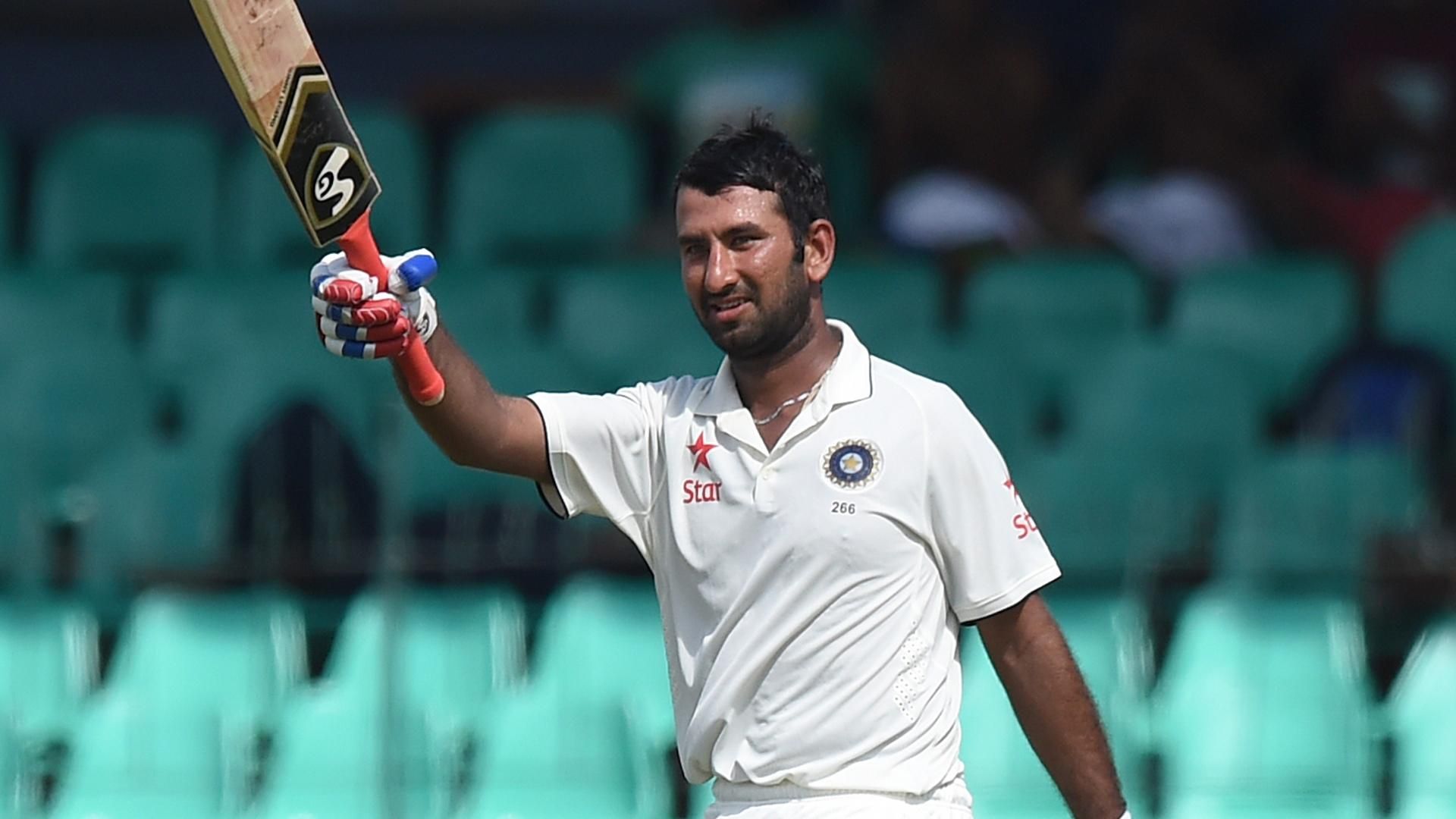Of Hundreds and DRS, Pujara Speaks

At a young age, engulfed in the IPL jamboree, he struggled to connect to the cherry. Cheteshwar Pujara didn’t confirm his talent back in the day; he fell off the radar with the arrival of Ajinkya Rahane and Virat Kohli. But soon after Rahul Dravid’s swansong in 2012, he came out of nowhere and established himself as the dependable No 3 in the Test squad.
The double ton (206 not out) against England in 2012 announced his second coming; four years since that memorable innings, Pujara is more resilient and powerful with technique. He verified his modus operandi with consecutive hundreds (124 and 119) in the ongoing series against the same opponents.
What sets the 28-year-old right-hander rolling is his clear mindset. He is clear about the pros and cons, dos and don’ts. As the series introduced a third character in the plot — DRS — Pujara sat upright to dismiss criticism regarding the right hour to use the phenomenon. The Indian team used DRS twice on the fourth day of the second Test against Alastair Cook. They were soon left with none while England roared aloud.
“Before DRS came into the picture, we sat down and discussed how to take calls as a fielding unit. While batting, we had a plan that both the batsmen will decide whether to opt for it,” said Pujara, who expected his team to achieve what they did.
“We are happy how things took shape. We knew it won’t be easy to get England out but ultimately we managed to do what we had to,” he added.
Despite the ton in Rajkot (his hometown), India couldn’t seal the rubber. But Pujara is not worried. The local boy endured spasms en route to his hundred, his excitement reflected when he almost ran towards his family, who appreciated his heroics from the stands. It took him six years — with surgeries and injuries, consistency in domestic cricket — to play in his own backyard. Pujara took more than 20 balls to cross the 90s and he gifted 11 dot balls to the opposition while batting on 99. Thankfully, the nervous nineties did not get the better of him.
“When you are playing in India, you expect the ball to keep low at times and certain situations can be tricky. It is difficult to get people out if they are defensive,” he reasoned, explaining his finesse as well as another batsman who impressed him, Haseeb Hameed — the England opener who scored a stylish 82 in the first Test and stood strong for three hours, facing 144 balls for his sturdy 25 on the fourth day of the second Test.
“Hameed is an impressive character but the way he got out was unfortunate. The batsmen need to adjust to spin wisely. At times, the spinners generate bounce,” added Pujara, who was confident that England would falter chasing 400 on the final day. Hence, the fact that India couldn’t score more than 204 didn’t bother him.
“The cracks were visible from the fourth day and if you have 400 runs on the board, it is not easy chasing. Not many teams have done it here. So, our low score in the second innings wouldn’t have had any psychological advantage for them,” he said.
The third Test between India and England is underway at PCA Stadium in Mohali at the moment'.



